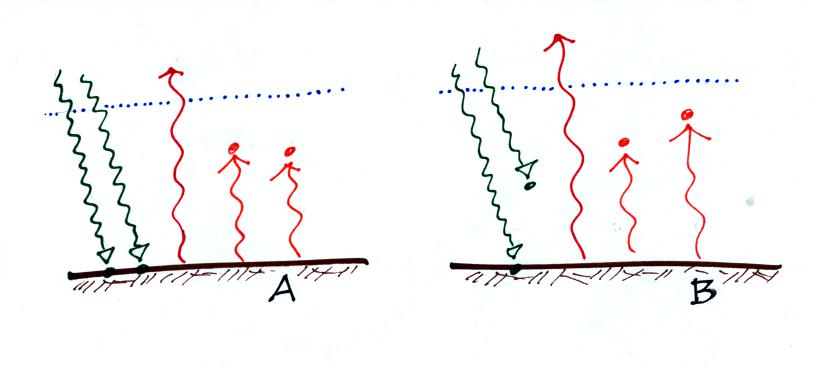Optional Assignment #3
(this assignment is due at the beginning of class next Tuesday)
1.
Is Point A in the figure
below in
a RIDGE or a TROUGH? Would the winds at Point B blow toward
the
NORTHEAST SOUTHEAST SOUTHWEST or NORTHWEST?
Would you expect to
find relatively WARM or COLD air below Point C?
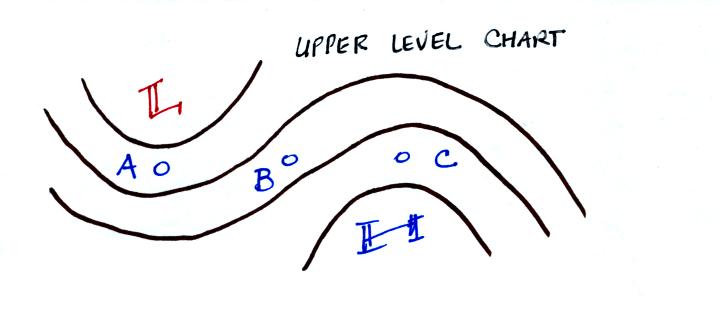
2.
Based on the directions and
amounts of air movement at the surface and at upper levels, would you
expect the surface pressure to INCREASE, remain the
SAME, or
DECREASE?
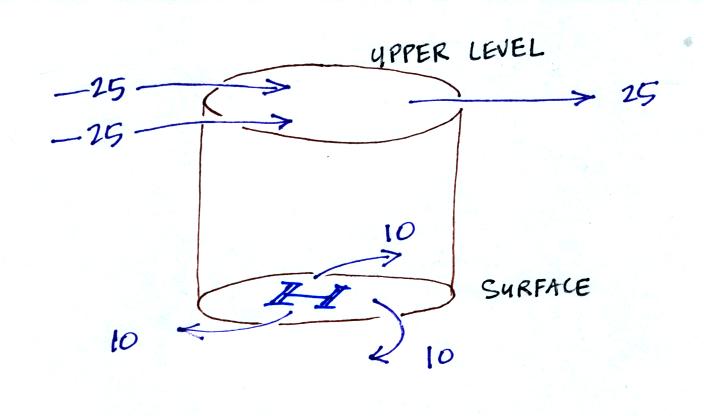
3.
The rate at which energy is
transported through an object by conduction depends on the thermal
conductivity of the material and on the temperature gradient. Do
you
think energy would be transported more rapidly through
OBJECT A or
OBJECT B in the figure below? (A has high thermal
conductivity, B has
low conductivity; the temperature gradients are the same)
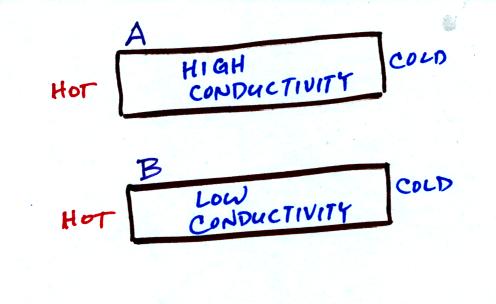
Do you think energy would be
transported more rapidly through OBJECT C or OBJECT
D below. (Both
materials have the same thermal conductivities, the temperature
gradients are different)
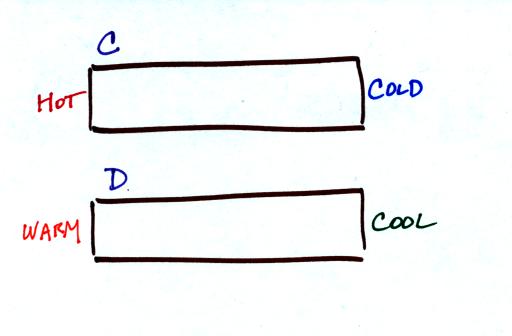
4.
A cold southward flowing
ocean current (the California current) is
found on the west coast of the United States, a warm northward current
(the Gulf Stream) is found off the east coast. Both currents
transport
energy from the tropics to the polar regions. Oceans currents
like
these illustrate energy transport by
a.
conduction
b.
convection
c. electromagnetic
radiation
d. latent heat
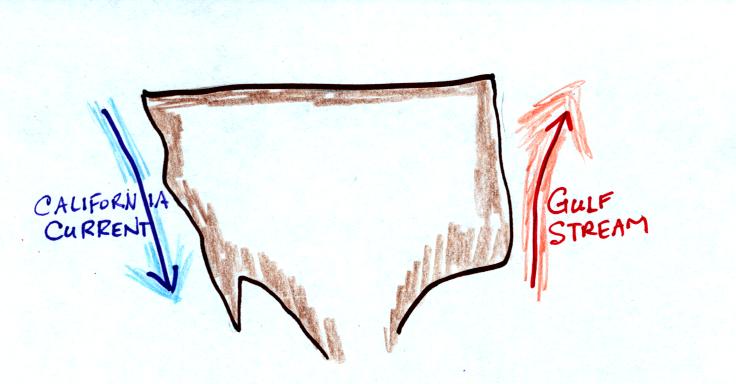
5.
Would a positive charge
placed at the x in the figure below, exactly half way
between the + and - charges, move to the
RIGHT, move to the LEFT, or NOT
MOVE at all?
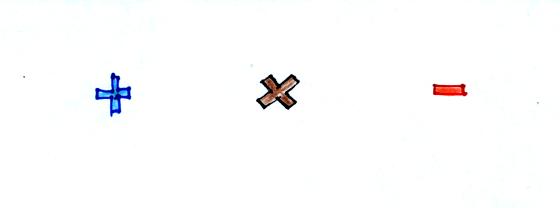
6.
Are Points A and B in the
figure below exactly 1/4
1/2 3/4 or 1 wavelength apart?
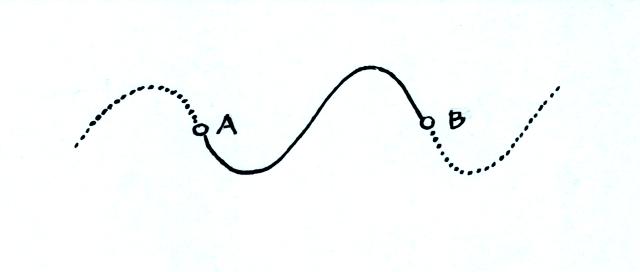
7.
What was Isaac Newton able to
demonstrate by shining white light
through a glass prism?
8.
Is
UV-A
UV-B or UV-C the
most energetic form of electromagnetic radiation?
Does VISIBLE
light
MICROWAVE radiation
or INFRARED light
have the shortest wavelength?
9.
Which of the following is not
a form of electromagnetic radiation?
a. gamma
rays b. radio
waves c. sound
waves d. x-rays
10.
Does filter absorption
CURVE A or CURVE B correctly depict the behavior of
the red filter shown below at left?

11.
The temperature of the
tungsten filament in a bulb is about 3000 K. What is the
wavelength of peak emission? What kind of light is that, can you
see it?
12.
About half (49%) of the light
emitted by the sun is UV
VIS IR light.
13.
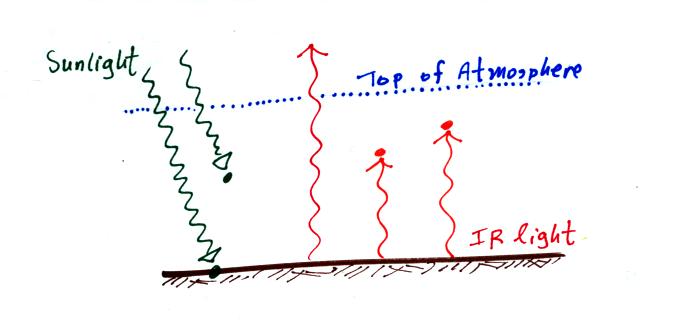
How many total units of
energy is being absorbed by the atmosphere? How many units of
energy is being absorbed by the ground? How many units of energy
must the atmosphere emit to be in radiative equilibrium? How many
units of energy must the ground receive from the atmosphere to be in
radiative equilibrium?
14.
There is an atmospheric
greenhouse effect on the earth because
a. oxygen and ozone absorb UV light
b. condensation of water vapor releases energy into the air
c. carbon dioxide and water vapor absorb IR light
d. water has a higher specific heat than soil
15.
Based on the information
given (neither figure is in radiative equilibrium) would the
temperature of the ground in Figure A below be WARMER
COLDER or the SAME as the ground in Figure B?
